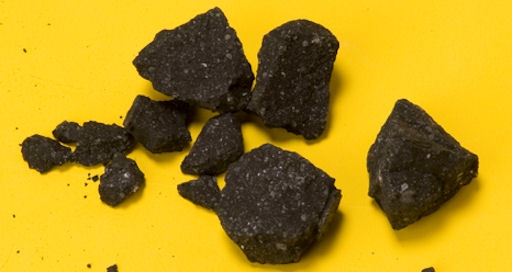Охотники за метеоритами обнаружили фрагменты недавнего огненного шара в Калифорнии
28-04-2012, 07:59. Разместил: VP
Охотникам за метеоритами удалось найти фрагменты огромного метеора, который пролетел в небе Калифорнии на прошлой неделе. Одним из удачливых охотников стал Питер Дженкинс, эксперт по метеорам и метеоритам, известный благодаря обнаружению фрагментов астероида 2008 TC3, упавшего в 2008 году в Судане.
Астроном Франк Марчис написал в своем блоге на Cosmic Dairy, что Дженкинс понял, что размер калифорнийского астероида подобен размеру 2008 TC3, так что его фрагменты должны были достигнуть поверхности, так же как и в 2008.
Дженкинс начал поиски и ему удалось обнаружить 4 граммовый фрагмент метеора на парковке в Лотосе (Калифорния).
NASA и SETI попросили общественность предоставить какие-либо любительские фотографии или видеозаписи метеора осветившего небо над горами Сьерра-Невада и создавшего звуковой удар, который был слышен на обширной территории в 7:51 в воскресенье 22 апреля 2012 года.
FIREBALL PHOTOS WANTED: Meteor expert Peter Jenniskens of NASA's Ames Research Center could use some help from the general public--in particular, photographers and business owners with security cameras in central California. He needs photos of the mini-van sized asteroid that exploded over the region on Sunday morning, April 22nd, at 7:51 am PDT. "Our goal is to determine the orbit of the object and to understand how this small asteroid fell apart when it entered the earth's atmosphere," he explains. [Got photos? Submit them here.]
Meteorite hunters, Jenniskens included, are starting to find pieces of the asteroid on the the ground. These samples were lying in the parking lot of Henningsen-Lotus Park, apparently crushed by a passing car:
The meteorites landed not far from Sutter's Mill in El Dorado County, CA, the same place gold was discovered in the 19th century, triggering the California Gold Rush. Jenniskens likens the thrill of finding these space rocks to finding gold: " I think John A. Sutter must have felt the same way when he found the first gold nugget back in January of 1848."
"The meteorites appear to be CM chondrites," he continues. This would make the sample very primitive, possibly contiaining minerals and compounds preserved from a time when the solar system was very young. "I can not say more as the samples have not yet been analyzed. My main concern now is to recover perishable data of the fireball, such as video security camera footage."
More footage will help researchers answer questions like these: "Was this a rubble pile or a monolitihic block? Was the orbit very evolved, or could its semi-major axis perhaps still point us to the source region of CM chondrites in the asteroid belt?" Jeniskens wonders. "This is a rare opportunity to learn about the properties of a particular class of near-Earth objects."
Вернуться назад
